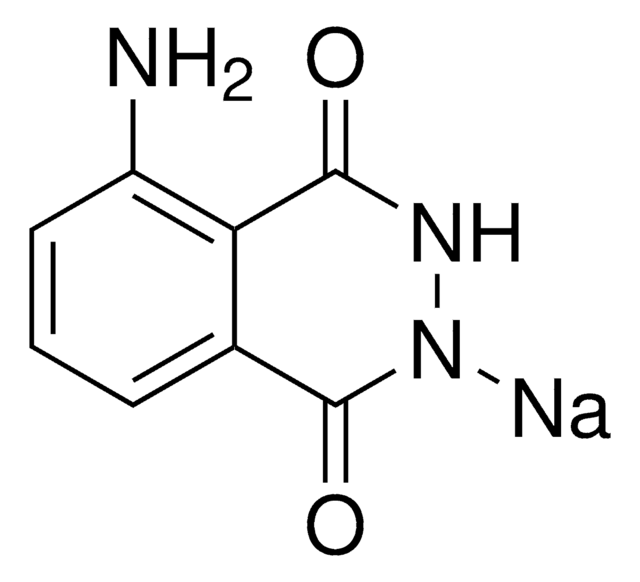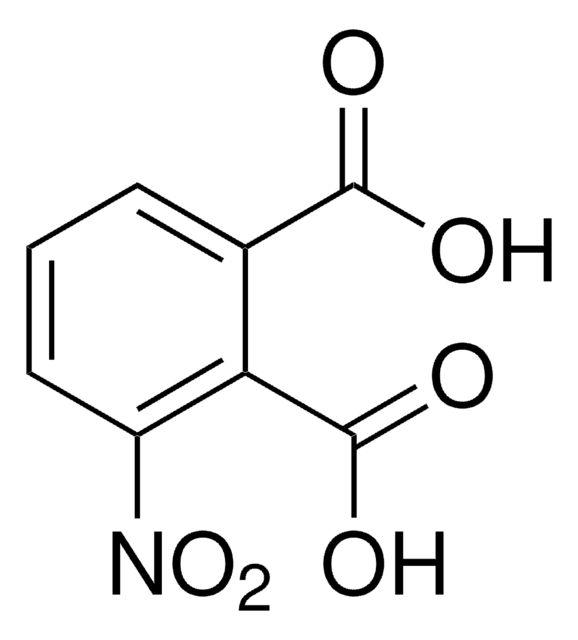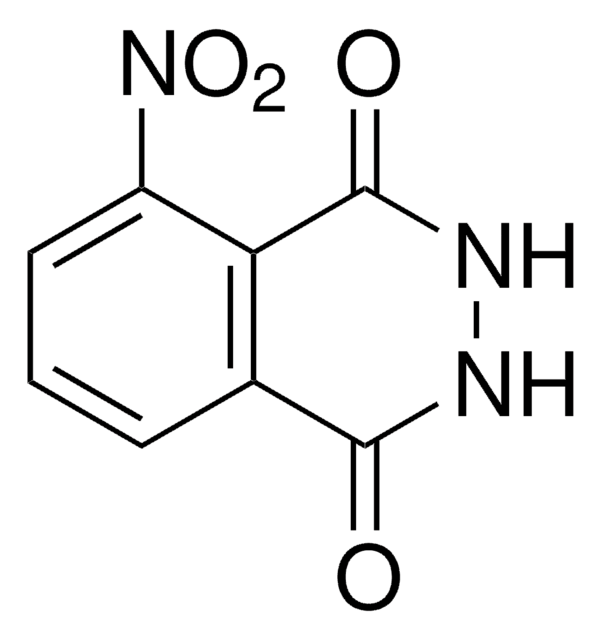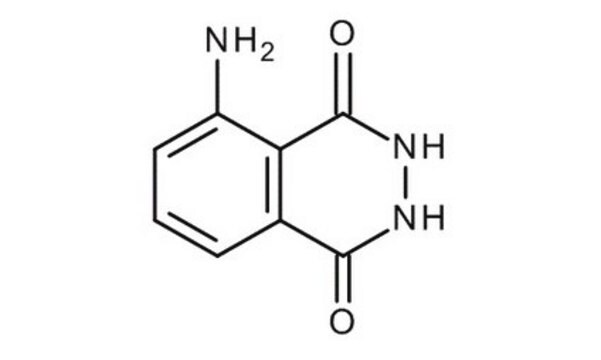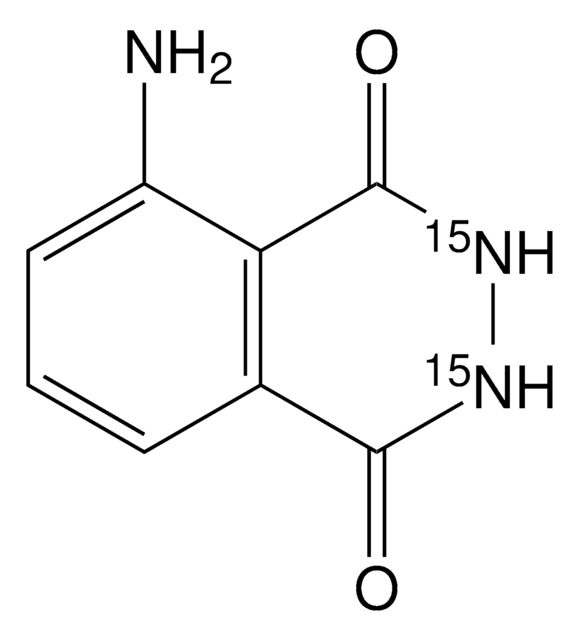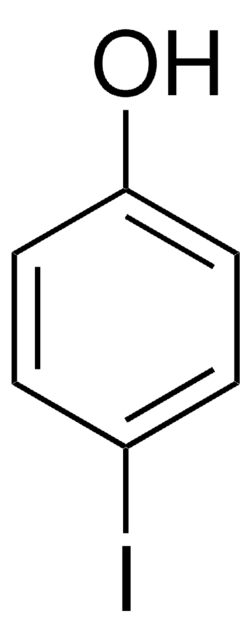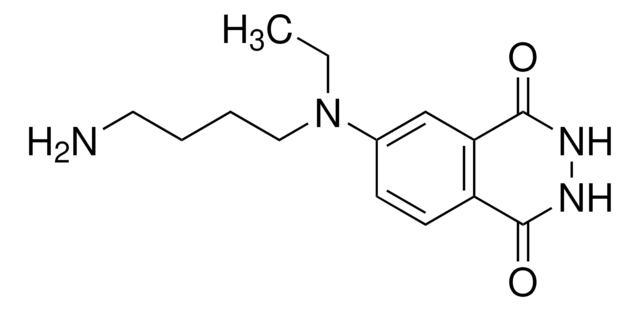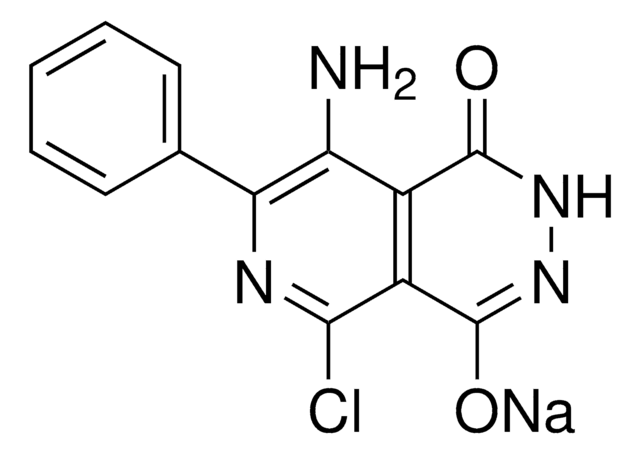123072
Luminol
97%
Sinonimo/i:
3-Aminophthalhydrazide, 5-Amino-2,3-dihydro-1,4-phthalazinedione
About This Item
Prodotti consigliati
Livello qualitativo
Saggio
97%
Punto di fusione
>300 °C (lit.)
Stringa SMILE
Nc1cccc2C(=O)NNC(=O)c12
InChI
1S/C8H7N3O2/c9-5-3-1-2-4-6(5)8(13)11-10-7(4)12/h1-3H,9H2,(H,10,12)(H,11,13)
HWYHZTIRURJOHG-UHFFFAOYSA-N
Cerchi prodotti simili? Visita Guida al confronto tra prodotti
Descrizione generale
Applicazioni
- As a chemiluminiscent substance. Used to measure opsonic and phagocytic function.
- As a biological sensor. Used to detect the polymorphonuclear leukocytes (PMNL) response in a patient with a myeloperoxidase (MPO) deficiency.
- Used as a forensic test for blood.
Caratteristiche e vantaggi
- Very effective chemiluminiscent compound.
- Can detect sub-part per billion levels of metal ions with simple and inexpensive instrumentation.
Codice della classe di stoccaggio
11 - Combustible Solids
Classe di pericolosità dell'acqua (WGK)
WGK 3
Punto d’infiammabilità (°F)
Not applicable
Punto d’infiammabilità (°C)
Not applicable
Dispositivi di protezione individuale
dust mask type N95 (US), Eyeshields, Gloves
Scegli una delle versioni più recenti:
Possiedi già questo prodotto?
I documenti relativi ai prodotti acquistati recentemente sono disponibili nell’Archivio dei documenti.
I clienti hanno visto anche
Articoli
Graphene has emerged as the new wonder material. Being only one atom thick and composed of carbon atoms arranged in a hexagonal honeycomb lattice structure, the interest in this material has exploded exponentially since 2004 when it was first isolated and identified using a very simple method.
Il team dei nostri ricercatori vanta grande esperienza in tutte le aree della ricerca quali Life Science, scienza dei materiali, sintesi chimica, cromatografia, discipline analitiche, ecc..
Contatta l'Assistenza Tecnica.

